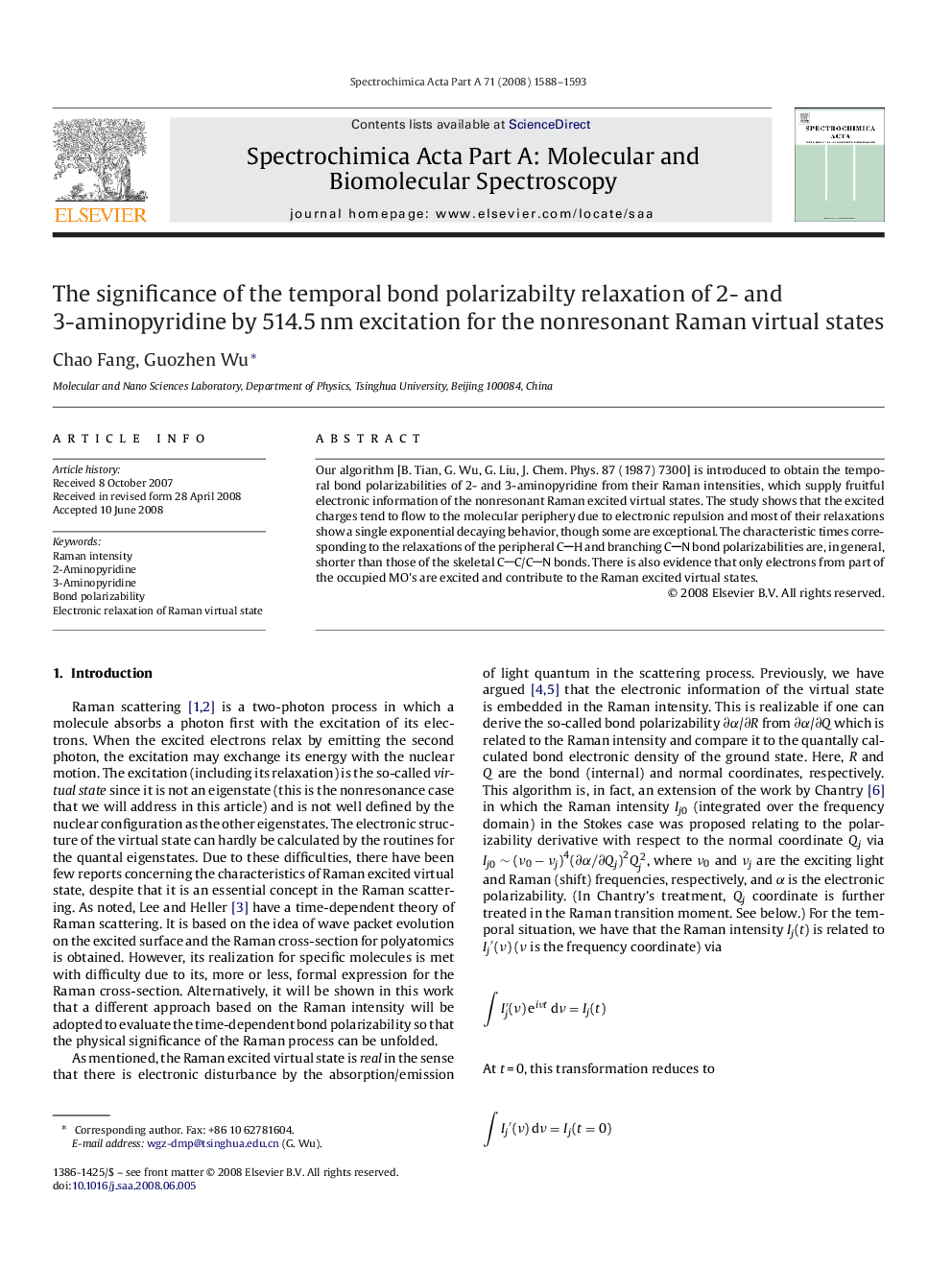| Article ID | Journal | Published Year | Pages | File Type |
|---|---|---|---|---|
| 1233905 | Spectrochimica Acta Part A: Molecular and Biomolecular Spectroscopy | 2008 | 6 Pages |
Abstract
Our algorithm [B. Tian, G. Wu, G. Liu, J. Chem. Phys. 87 (1987) 7300] is introduced to obtain the temporal bond polarizabilities of 2- and 3-aminopyridine from their Raman intensities, which supply fruitful electronic information of the nonresonant Raman excited virtual states. The study shows that the excited charges tend to flow to the molecular periphery due to electronic repulsion and most of their relaxations show a single exponential decaying behavior, though some are exceptional. The characteristic times corresponding to the relaxations of the peripheral CH and branching CN bond polarizabilities are, in general, shorter than those of the skeletal CC/CN bonds. There is also evidence that only electrons from part of the occupied MO's are excited and contribute to the Raman excited virtual states.
Related Topics
Physical Sciences and Engineering
Chemistry
Analytical Chemistry
Authors
Chao Fang, Guozhen Wu,
